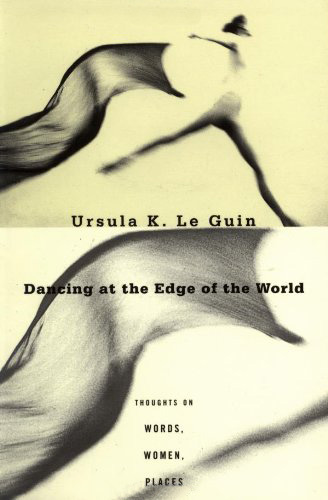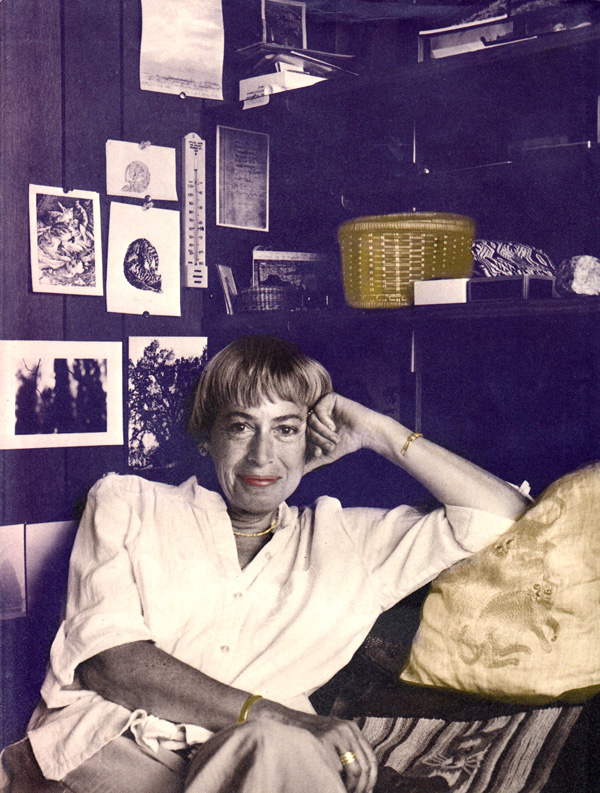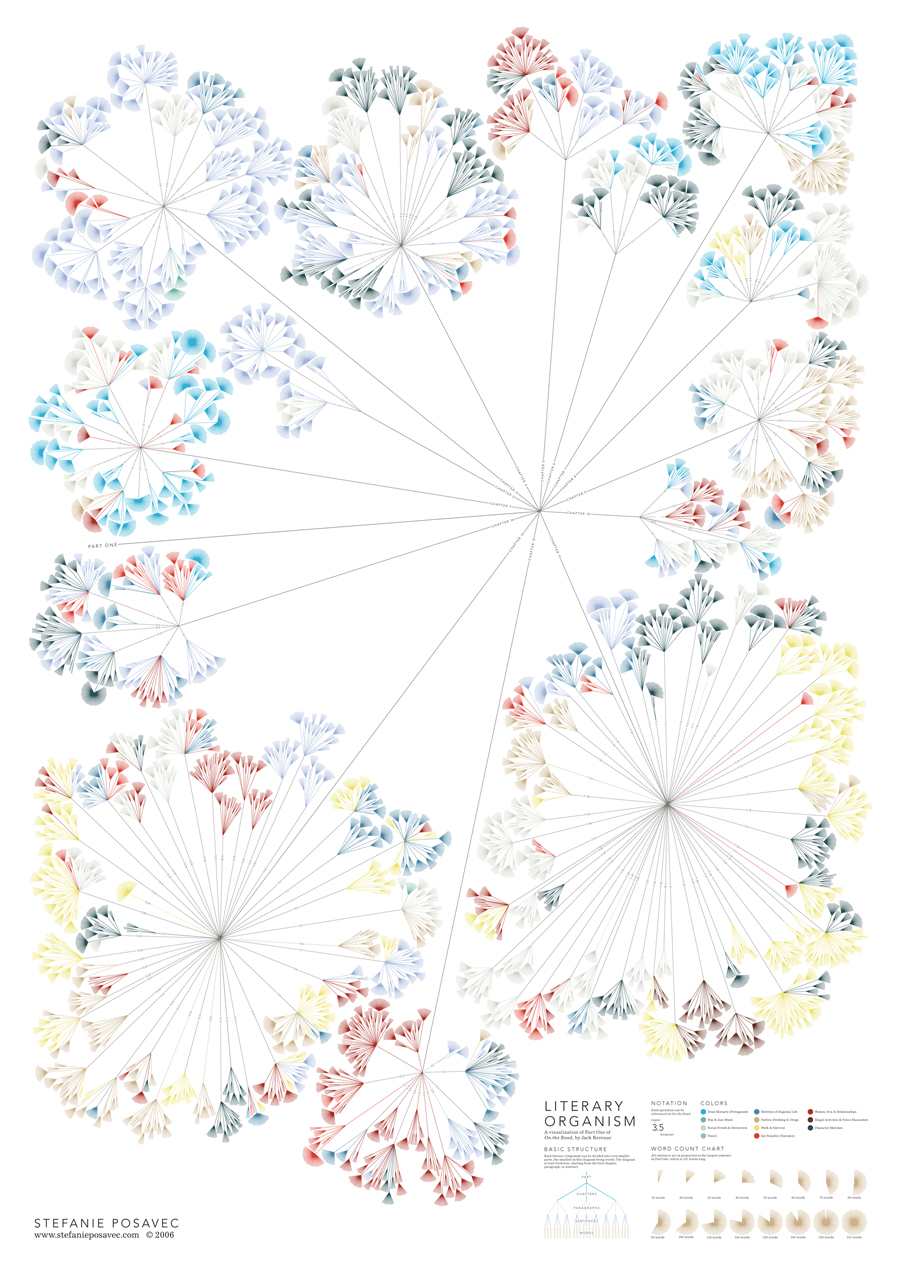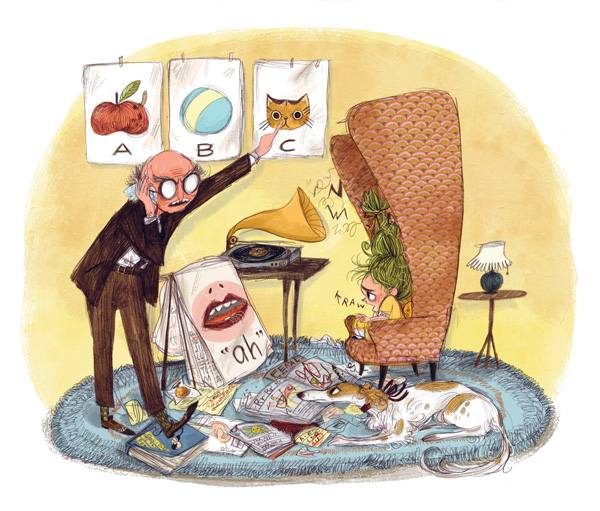“All makers must leave room for the acts of the spirit. But they have to work hard and carefully, and wait patiently, to deserve them.”
 Since long before the question of where good ideas come from became the psychologists’ favorite sport, readers, fans, and audiences have been hurling it at authors and artists, much to their frustration. A few brave souls like Neil Gaiman, Albert Einstein, and David Lynch have attempted to answer it directly, or in Leonard Cohen’s case to delightfully non-answer it directly, but none have done so with greater vigor of mind and heart than Ursula K. Le Guin — a writer of extraordinary wisdom delivered with irresistible wit, and the eloquent recipient of the National Book Foundation’s 2014 Medal for Distinguished Contribution to American Letters.
Since long before the question of where good ideas come from became the psychologists’ favorite sport, readers, fans, and audiences have been hurling it at authors and artists, much to their frustration. A few brave souls like Neil Gaiman, Albert Einstein, and David Lynch have attempted to answer it directly, or in Leonard Cohen’s case to delightfully non-answer it directly, but none have done so with greater vigor of mind and heart than Ursula K. Le Guin — a writer of extraordinary wisdom delivered with irresistible wit, and the eloquent recipient of the National Book Foundation’s 2014 Medal for Distinguished Contribution to American Letters.
In 1987, Le Guin addressed the eternal question in an essay titled “Where Do You Get Your Ideas From?,” found in the altogether fantastic 1989 collection of her speeches, essays, and reviews, Dancing at the Edge of the World: Thoughts on Words, Women, Places (public library | IndieBound).

Noting that audiences frequently ask her the canonical question after lectures and talks, she considers the two reasons that make it impossible to answer:
The reason why it is unanswerable is, I think, that it involves at least two false notions, myths, about how fiction is written.
First myth: There is a secret to being a writer. If you can just learn the secret, you will instantly be a writer; and the secret might be where the ideas come from.
Second myth: Stories start from ideas; the origin of a story is an idea.
Well before psychologists’ pioneering findings to that effect, Le Guin writes:
I will dispose of the first myth as quickly as possible. The “secret” is skill. If you haven’t learned how to do something, the people who have may seem to be magicians, possessors of mysterious secrets. In a fairly simple art, such as making pie crust, there are certain teachable “secrets” of method that lead almost infallibly to good results; but in any complex art, such as housekeeping, piano-playing, clothes-making, or story-writing, there are so many techniques, skills, choices of method, so many variables, so many “secrets,” some teachable and some not, that you can learn them only by methodical, repeated, long-continued practice — in other words, by work.
[…]
Some of the secretiveness of many artists about their techniques, recipes, etc., may be taken as a warning to the unskilled: What works for me isn’t going to work for you unless you’ve worked for it.
Seconding Jack Kerouac’s question of whether writers are born or made, Le Guin considers the role of what we call natural talent and what it lies beneath it:
My talent and inclination for writing stories and keeping house were strong from the start, and my gift for and interest in music and sewing were weak; so that I doubt that I would ever have been a good seamstress or pianist, no matter how hard I worked. But nothing I know about how I learned to do the things I am good at doing leads me to believe that there are “secrets” to the piano or the sewing machine or any art I’m no good at. There is just the obstinate, continuous cultivation of a disposition, leading to skill in performance.
She then turns to the second central fallacy of the origin-of-ideas question, namely the notion of the “idea” itself:
The more I think about the word “idea,” the less idea I have what it means. … I think this is a kind of shorthand use of “idea” to stand for the complicated, obscure, un-understood process of the conception and formation of what is going to be a story when it gets written down. The process may not involve ideas in the sense of intelligible thoughts; it may well not even involve words. It may be a matter of mood, resonances, mental glimpses, voices, emotions, visions, dreams, anything. It is different in every writer, and in many of us it is different every time. It is extremely difficult to talk about, because we have very little terminology for such processes.
Echoing Einstein’s idea of “combinatory play” and artist Francis Bacon’s notion that original art is the product of finely “grinding up” one’s influences, Le Guin speaks to the combinatorial nature of the creative process:
I would say that as a general rule, though an external event may trigger it, this inceptive state or story-beginning phase does not come from anywhere outside the mind that can be pointed to; it arises in the mind, from psychic contents that have become unavailable to the conscious mind, inner or outer experience that has been, in Gary Snyder’s lovely phrase, composted. I don’t believe that a writer “gets” (takes into the head) an “idea” (some sort of mental object) “from” somewhere, and then turns it into words and writes them on paper. At least in my experience, it doesn’t work that way. The stuff has to be transformed into oneself, it has to be composted, before it can grow a story.
Mystical as the process may be, Le Guin goes on to outline its “five principal elements,” which must “work in one insoluble unitary movement” in order to produce great writing:
- The patterns of the language — the sounds of words.
- The patterns of syntax and grammar; the way the words and sentences connect themselves together; the ways their connections interconnect to form the larger units (paragraphs, sections, chapters); hence the movement of the work, its tempo, pace, gait, and shape in time.
- The patterns of the images: what the words make us or let us see with the mind’s eye or sense imaginatively.
- The patterns of the ideas: what the words and the narration of events make us understand, or use our understanding upon.
- The patterns of the feelings: what the words and the narration, by using all the above means, make us experience emotionally or spiritually, in areas of our being not directly accessible to or expressible in words.

Artwork from Stefanie Posavec's 'Writing Without Words,' visualizing the patterns of sentences, paragraphs, and words in a text. Click image for details.
Echoing T.S. Eliot’s notion of idea incubation, she adds:
All these kinds of patterning — sound, syntax, images, ideas, feelings — have to work together; and they all have to be there in some degree. The inception of the work, that mysterious stage, is perhaps their coming together: when in the author’s mind a feeling begins to connect itself to an image that will express it, and that image leads to an idea, until now half-formed, that begins to find words for itself, and the words lead to other words that make new images, perhaps of people, characters of a story, who are doing things that express the underlying feelings and ideas that are now resonating with each other.
Considering the lopsiding of that five-point balance, Le Guin speaks to the importance of failure in growth:
If any of these processes get scanted badly or left out, in the conception stage, in the writing stage, or in the revising stage, the result will be a weak or failed story. Failure often allows us to analyze what success triumphantly hides from us.
In a sentiment that Rebecca Solnit would come to second decades later in reflecting on the shared intimacy of reading and writing, Le Guin deploys one of her characteristically animated metaphors that can’t help but put a smile on the soul:
Beginners’ failures are often the result of trying to work with strong feelings and ideas without having found the images to embody them, or without even knowing how to find the words and string them together. Ignorance of English vocabulary and grammar is a considerable liability to a writer of English. The best cure for it is, I believe, reading. People who learned to talk at two or so and have been practicing talking ever since feel with some justification that they know their language; but what they know is their spoken language, and if they read little, or read schlock, and haven’t written much, their writing is going to be pretty much what their talking was when they were two.

Illustration by Emily Hughes from 'Wild,' one of the best children's books of the year. Click image for details.
She returns to the vital balance of those five elements:
There is a relationship, a reciprocity between the words and the images, ideas, and emotions evoked by those words: the stronger that relationship, the stronger the work. To believe that you can achieve meaning or feeling without coherent, integrated patterning of the sounds, the rhythms, the sentence structures, the images, is like believing you can go for a walk without bones.
Le Guin considers the epicenter of that relationship — of the elements, of reader and writer:
Imagery takes place in “the imagination,” which I take to be the meeting place of the thinking mind with the sensing body… In the imagination we can share a capacity for experience and an understanding of truth far greater than our own. The great writers share theirs souls with us — “literally.”
[…]
The intellect cannot do the work of the imagination; the emotions cannot do the work of the imagination; and neither of them can do anything much in fiction without the imagination.
Where the writer and the reader collaborate to make the work of fiction is perhaps, above all, in the imagination. In the joint creation of the fictive world.
With a self-effacing wink at her profession and the odd creative rituals of her ilk, Le Guin considers the writer’s eternal tussle with his or her consciousness of, and often self-consciousness about, the audience — an audience that, today, is exponentially more able and willing to make its presence and opinion known via likes, tweets, and other innocuously named, spiritually toxic Pavlovian mechanisms:
Writers are egotists. All artists are. They can’t be altruists and get their work done. And writers love to whine about the Solitude of the Author’s Life, and lock themselves into cork-lined rooms or droop around in bars in order to whine better. But although most writing is done in solitude, I believe that it is done, like all the arts, for an audience. That is to say, with an audience. All the arts are performance arts, only some of them are sneakier about it than others.

Illustration by Jim Stoten Emily Hughes from 'Mr. Tweed's Good Deeds.' Click image for details.
But her most piercing point — one she would come to echo three decades later in her National Book Award acceptance speech — is a monumental disclaimer:
I beg you please to attend carefully now to what I am not saying. I am not saying that you should think about your audience when you write. I am not saying that the writing writer should have in mind, “Who will read this? Who will buy it? Who am I aiming this at?” — as if it were a gun. No.
While planning a work, the writer may and often must think about readers: particularly if it’s something like a story for children, where you need to know whether your reader is likely to be a five-year-old or a ten-year old.* Considerations of who will or might read the piece are appropriate and sometimes actively useful in planning it, thinking about it, thinking it out, inviting images. But once you start writing, it is fatal to think about anything but the writing. True work is done for the sake of doing it. What is to be done with it afterwards is another matter, another job. A story rises from the springs of creation, from the pure will to be; it tells itself; it takes its own course, finds its own way, its own words; and the writer’s job is to be its medium.
And yet the reader, Le Guin argues, is an essential piece of the telling of the story. The writer’s work should extend an invitation for collaboration to the reader:
The writer cannot do it alone. The unread story is not a story; it is little black marks on wood pulp. The reader, reading it, makes it alive: a live thing, a story.
[…]
It comes down to collaboration, or sharing the gift: the writer tries to get the reader working with the text in the effort to keep the whole story all going along in one piece in the right direction (which is my general notion of a good piece of fiction).
In this effort, writers need all the help they can get. Even under the most skilled control, the words will never fully embody the vision. Even with the most sympathetic reader, the truth will falter and grow partial. Writers have to get used to launching something beautiful and watching it crash and burn. They also have to learn when to let go control, when the work takes off on its own and flies, farther than they ever planned or imagined, to places they didn’t know they knew. All makers must leave room for the acts of the spirit. But they have to work hard and carefully, and wait patiently, to deserve them.
Dancing at the Edge of the World is a glorious read in its entirety. Complement it with Le Guin on being a man and on aging and what beauty really means.
Complement for more timeless wisdom on writing from some of history’s greatest authors, see this ongoing omnibus of advice, including Elmore Leonard’s ten tips on writing, Neil Gaiman’s eight pointers, Nietzsche’s ten rules, Walter Benjamin’s thirteen doctrines, Henry Miller’s eleven commandments, and Kurt Vonnegut’s eight tips for writing with style, Zadie Smith on the two psychologies for writing, and Vladimir Nabokov on the three qualities of a great storyteller.
* C.S. Lewis would beg to vehemently differ, as would Tolkien, and Maurice Sendak would practically leap in protestation.
Donating = Loving
Bringing you (ad-free) Brain Pickings takes hundreds of hours each month. If you find any joy and stimulation here, please consider becoming a Supporting Member with a recurring monthly donation of your choosing, between a cup of tea and a good dinner.
You can also become a one-time patron with a single donation in any amount.
 Brain Pickings has a free weekly newsletter. It comes out on Sundays and offers the week’s best articles. Here’s what to expect. Like? Sign up.
Brain Pickings has a free weekly newsletter. It comes out on Sundays and offers the week’s best articles. Here’s what to expect. Like? Sign up.
Brain Pickings takes 450+ hours a month to curate and edit across the different platforms, and remains banner-free. If it brings you any joy and inspiration, please consider a modest donation – it lets me know I'm doing something right. 




















